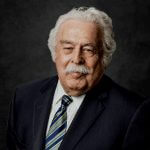The Death of a Fireman from the Flesh-Eating Bug
Award: $2.4 Million
Case Synopsis
Case Type:
Malpractice
Injury:
Preventable death due to overwhelming sepsis
Defendant:
Samaritan Hospital, Troy, NY
Length of Case:
2 years
Case Attorney
 Sanford Rosenblum
Sanford Rosenblum
What makes this case unique:
Multiple hurdles involving expert witnesses; a difficult-to-disprove defense strategy
In the early 90s I represented the widow of a man from Troy, New York, who by profession was a fireman, although he also had a second job doing back-office work for a bank. Despite being almost 50 years old, he managed to contract chickenpox. The chickenpox became invasive and attacked his throat. In addition to the usual symptoms of chickenpox—malaise, fever, and itching—he began to experience wracking pain.
He was soon hospitalized for pain management, as well as severe swelling in his throat. The doctors obviously thought it would be appropriate to ease his pain until the virus ran its course. The pain medication was primarily administered through intramuscular shots. Unfortunately, the area around the shots quickly became infected and the tissue began to deteriorate.
In a few days, it got so bad the doctors decided to do lab studies of the tissue near the injection site. To their horror, they discovered that their patient was suffering from the dreaded flesh-eating bug: necrotizing fasciitis. This disease occurs when deadly bacteria enter the body through a break in the skin, such as an injection site.
Unfortunately, the doctors failed to treat him appropriately. Necrotizing fasciitis is caused by group A streptococcus bacteria, also called strep A. Physicians have learned that massive amounts of plain-old ampicillin (a form of penicillin) is effective in treating it. But early diagnosis is essential, to be immediately followed by massive doses of IV ampicillin, and other common and well-known medications.
Tragically, however, his physicians failed to treat him properly. Soon the fasciitis spread throughout his legs. On his 50th birthday, their patient, a happily married man and father of three teenagers, died from overwhelming sepsis.
Shortly thereafter his widow consulted us. We interviewed her to find out what she had observed. Then we got to work putting the medical records under a microscope. As a result of our intensive research into the medical errors we uncovered, and other investigations, we concluded we could establish a winning case of medical malpractice.
Deep into the pre-trial process, we experienced two complications in this case that made it particularly noteworthy.
The first occurred when consulting with an expert physician from New York whom we had retained for several other cases. Dr. Henry Murray was the deputy chairman of the Infectious Disease Department at NY-Cornell Hospital. At that time, Dr. Murray was also the physician to the renowned tennis champion Arthur Ashe, who had contracted AIDs through a blood transfusion. Someone as famous and wealthy as Arthur Ashe would have his pick of physicians, so for Dr. Murray to be his go-to doctor, reflected strongly on his credentials.
When we asked Dr. Murray to review the case, he initially came to the conclusion that the hospital was not liable. He based this conclusion on medical literature that we believed was outdated. There were more recent studies that indicated the hospital had treated their patient negligently.
We confronted him with those newer studies, which made it clear that if large doses of penicillin are administered early in the course of the disease, the patient survives in three out of four cases. That satisfied the legal standard that if survival was more likely than not, and if the patient had received substandard care, a case of medical malpractice could be established.
Another doctor might have been surprised and even pushed back when told by an attorney that his opinion was wrong. Thankfully, Dr. Murray had worked with us before and knew how much research we did in each medical malpractice case we undertook. By quoting those studies to him, he changed his opinion and agreed to testify. Many other doctors would not have done that for reasons of status or ego. Dr. Murray, whom we amongst ourselves had already dubbed Darth Vader when preparing to have him testify, deserved accolades to stand up for the truth as he saw it. It would be impossible for the defense to cross-exam him, or damage his credibility in any way. We knew that from prior experience with him on the witness stand.
Once we knew we had Dr. Murray on board, the next order of business was to figure out whether or not the hospital’s attorneys had any way of defending this case that we had not anticipated. From the demands that the defense made, we began to zero in on what would prove to be their strategy. This is where the second complication arose.
By law, the tissue that had been taken from the fireman’s body had been preserved. Now the defense had asked for a new cut to be made from the tissue block. We had no choice but to permit that to be done by the defense pathologist. Of course, it made us more than curious. There was no doubt that the cause of death was necrotizing fasciitis, but…
As it turns out, the defense intended to argue that the man had been unknowingly suffering from prostate cancer, and would have died soon anyway. If that was true, the widow and her children would have been without his support regardless of the actions taken or not taken by the hospital. The value of the case would plummet.
It was up to us to either prove that he did not, in fact, have cancer, or if he did, that the form of cancer would not have led to an untimely death. We clearly had our work cut out for us.
With some tissue slides we had ordered prepared, we brought them to a prominent pathologist at Montefiore Medical Center in the Bronx. This pathologist was not only in regular medical practice in his specialty but he was also a Professor of Pathology at Einstein Medical School. He was among the best we could locate. In our presence, he reviewed the specimens at great length. Eventually, he turned to us and said, “I don’t know what this is. I can’t tell if I am looking at diseased tissue.”
Strike one!
He then summoned a colleague, who also examined the tissue sample at length. As we waited with bated breath, she came to the same conclusion.
Strike two!
So we asked the two of them what they recommended. They pointed us to someone at an associated hospital, who agreed to see us immediately. With increasing trepidation, we marched next door to a nearby hospital. Here we encountered yet a third pathologist who studied our slides intensely for what seemed like hours and then said, “I agree with the other doctors. I have no idea if I am looking at diseased tissue.”
For most attorneys that might have been strike three, but we treated it as a foul ball.
We explained to this doctor that the defense was trying to claim that this tissue demonstrated that our client’s late husband had prostate cancer, and asked if there was a leading authority on the disease. Was there someone who had “written the book” on prostate cancer? Without hesitation, he replied, “Yes, Dr. Jonathan Epstein, at Baltimore’s Johns Hopkins Hospital,” well known as one of America’s leading hospitals.
We immediately got in touch with Dr. Epstein and made an emergency appointment to consult with him. We knew we had to solve this puzzle. The defense had most likely found a pathologist willing to come to court and testify that the man we believed was a victim of malpractice was instead destined to die of cancer very soon even if he had survived the flesh-eating bug. We were off to Baltimore.
Thankfully, we had an inside track with Dr. Epstein. Although we had never consulted with him in earlier cases, we had obtained this speedy appointment with the help of the country’s foremost cardio-pathologist, Dr. Grover Hutchins from Johns Hopkins with whom we had collaborated in several major cardiac cases. We were sure Dr. Hutchins would give some credibility by assisting us in making the appointment, and we were right. We got in to see Dr. Epstein without delay.
When we met Dr. Epstein we immediately knew we were consulting an ultimate medical authority. There was no chit chat. Dr. Epstein took just one of our slides, wheeled his chair around to face the window where his microscope was situated to capture natural light. Dr. Epstein inserted the slide in the microscope and, after just glancing at it, turned to us and said, “Yes, this man was suffering from prostate cancer.”
We were crestfallen. At that moment, it seemed we had indeed struck out.
But then, in a quietly authoritative manner, Dr. Epstein continued, “However, this man was never going to die of this disease. More likely, he would have died of a heart attack or stroke, or simply of old age. In fact, several years ago, we would not even have called this cancer.”
As it turns out, as medical experts have learned more and more about cancer and cancerous cells, a wider variety of tissue samples fall under the label of “cancer.” But this increased understanding also leads to classifications of certain forms of cancer that are nonlethal and can effectively go untreated or even undiagnosed for many years without ill-effect on the patient.
Dr. Epstein told us, “When I come to court, I will testify that this is a very indolent form of prostate cancer. It would not have grown enough over the years to cause this man to die of it.”
Then and there we knew we had a winner. Not only did this world-famous doctor give us a definitive diagnosis, but he was clearly willing to say so in a court of law. Not all doctors will do so.
Homerun! Armed with this new information, we headed back to Albany.
We immediately advised the defense attorneys that their only argument—that the man was going to die anyway from prostate cancer—was about to get blown out of the water. We also did something that we rarely do before trial. We told the defense whom we had retained.
That proved to be the final blow. The defense crumbled and offered a multi-million dollar settlement right in the courthouse lobby, just as we came out of the Judge’s Chambers where a trial date had just been fixed.
After another sad but brief discussion with the widow, she accepted the offer. She chose not to take the matter to trial although we made it clear to her we had a winning case. It’s always the client’s final decision that counts, not the lawyer’s. That’s how it should be, but is not always the case.
The settlement was justifiable and sufficient. The victim had been earning a very modest living with a work-life expectancy of about 15 more years had he not succumbed to the fasciitis. That would have amounted to a total of about $900,000. Therefore, a $2.4 million settlement was clearly adequate to take care of his widow and three children, while also providing additional money to compensate for the pain and suffering her late husband had endured due to the medical negligence we had uncovered and established to legal certainty.
After the unusual hurdles we had crossed, we felt some satisfaction that our efforts on our client’s behalf were successful. We could go on to future challenges; they are always waiting just around the corner.
This story is about a personal injury case handled by renowned New York attorney Sanford “Sandy” Rosenblum. It is part of our ongoing series, Personal Injury Case Files.



